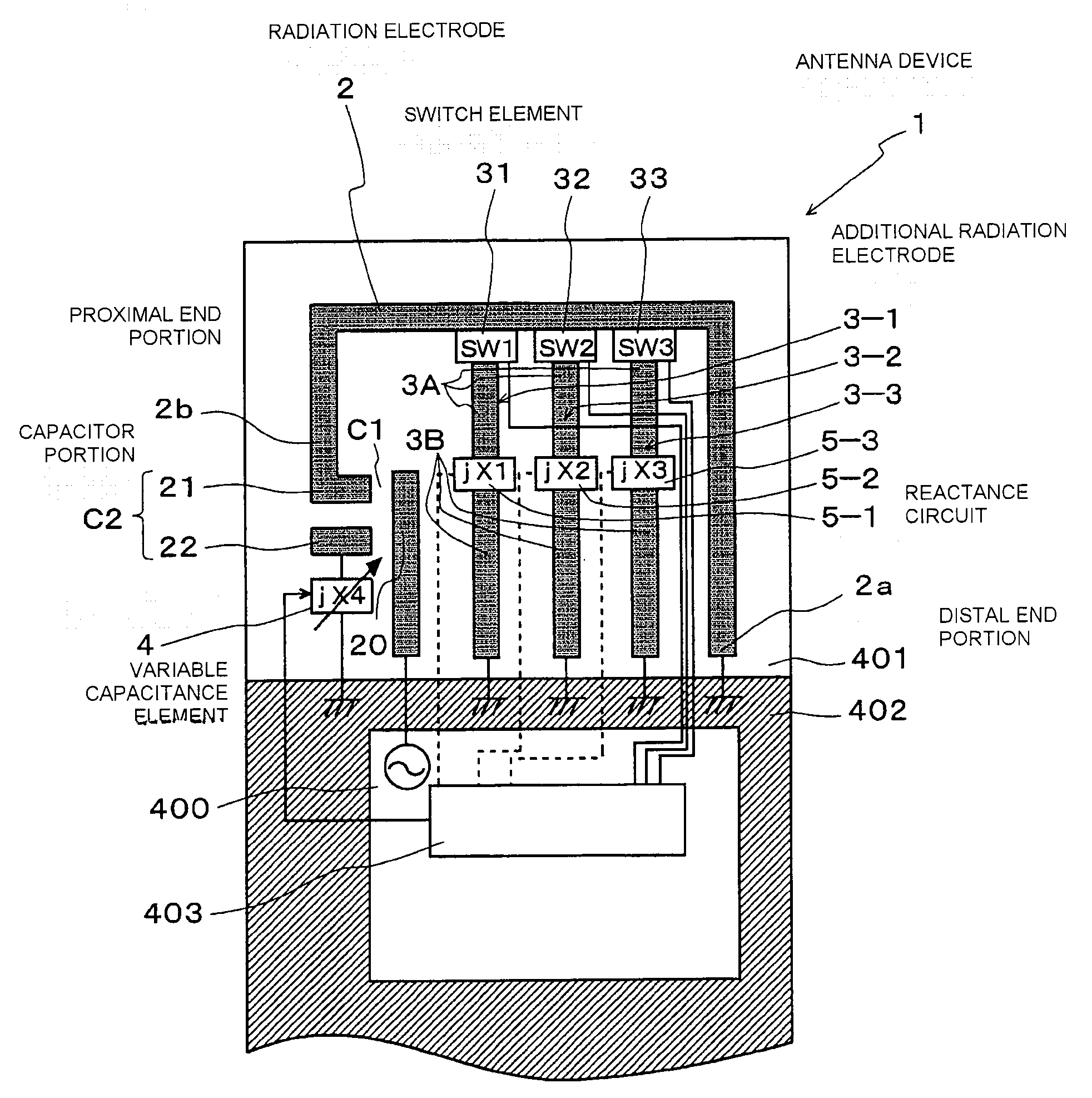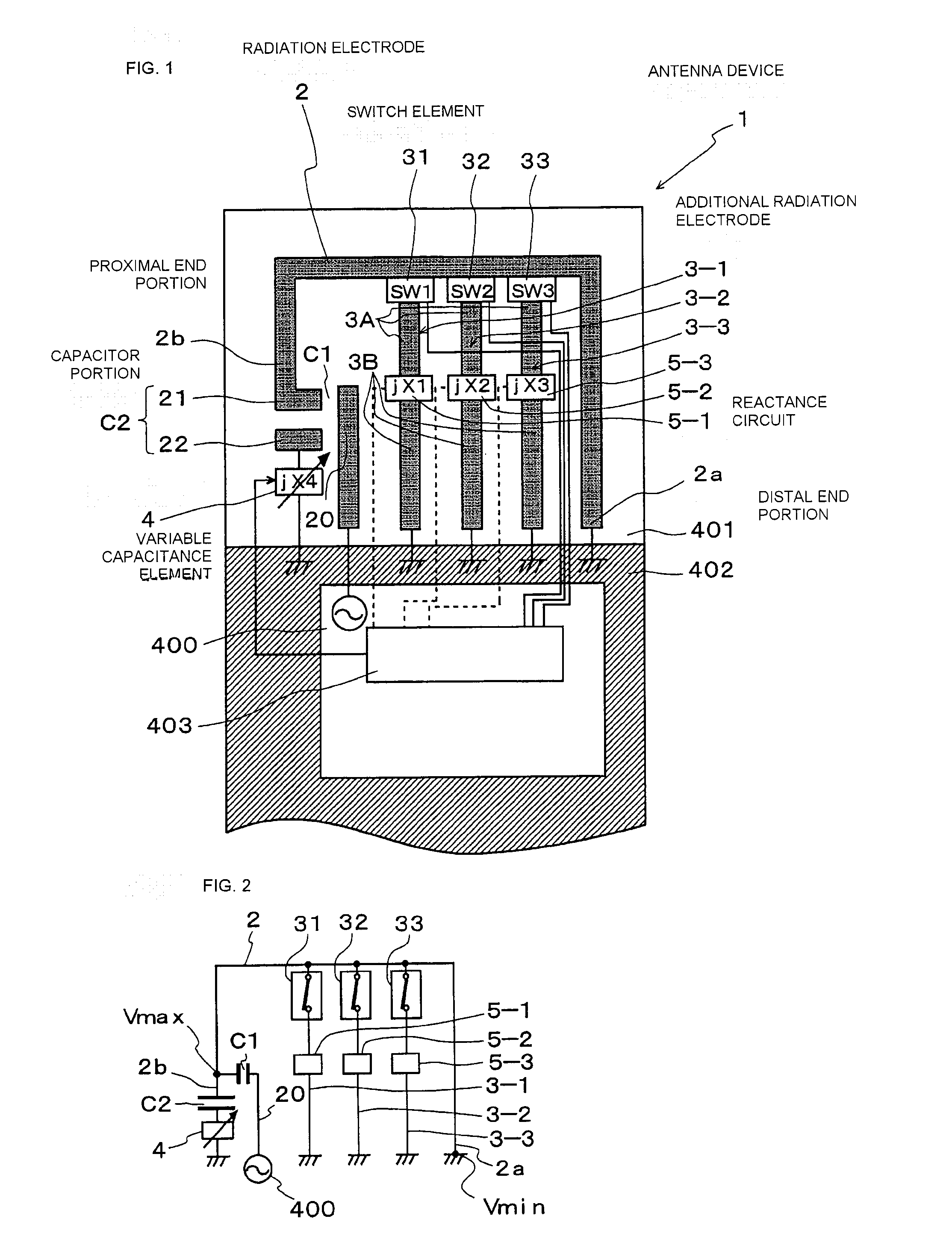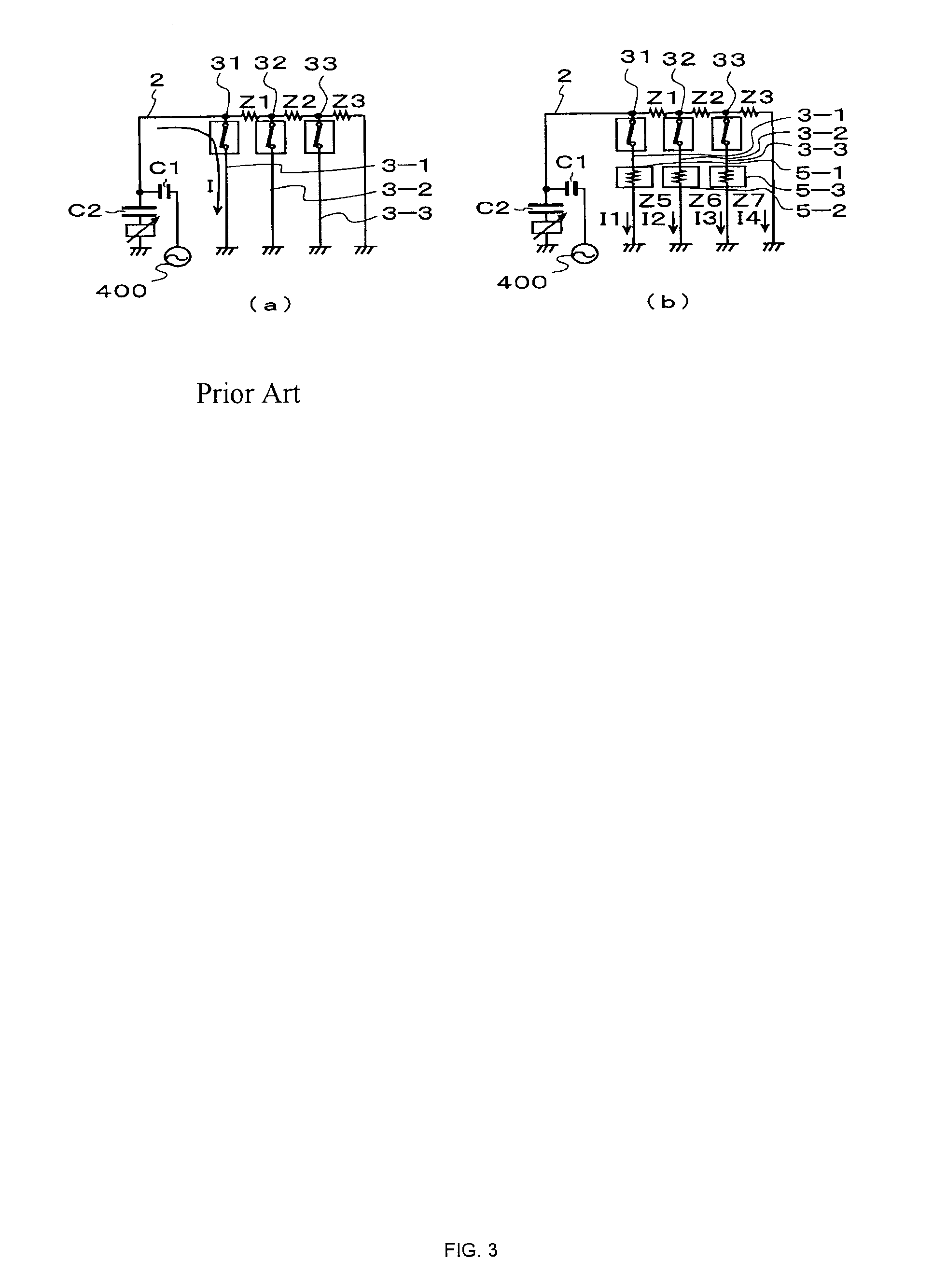Antenna device and wireless communication apparatus
a wireless communication and antenna technology, applied in the structure of radiating elements, elongated active elements, resonant antennas, etc., can solve the problems of significant degradation of antenna gain, degradation of antenna efficiency, and related antenna devices, so as to improve antenna efficiency and accurate matching
- Summary
- Abstract
- Description
- Claims
- Application Information
AI Technical Summary
Benefits of technology
Problems solved by technology
Method used
Image
Examples
first embodiment
[0107]FIG. 1 is a plan view showing an antenna device according to a first embodiment.
[0108]An antenna device 1 of this embodiment is mounted in a wireless communication apparatus such as a mobile telephone or a PC card.
[0109]As shown in FIG. 1, the antenna device 1 is disposed in a non-ground region 401 on a circuit board of the wireless communication apparatus, and exchanges a high-frequency signal with a transmission / reception unit 400 serving as a feed unit mounted in a ground region 402.
[0110]The antenna device 1 includes a radiation electrode 2, and a plurality of additional radiation electrodes 3-1 to 3-3 branched from the radiation electrode 2.
[0111]The radiation electrode 2 is a conductive pattern that is bent into a right-angled U-shape. A distal end portion 2a of the radiation electrode 2 is grounded to the ground region 402.
[0112]High-frequency power is capacitively fed from the feed unit 400 to the radiation electrode 2. Specifically, a horizontal electrode portion 21 i...
second embodiment
[0137]Next, a second embodiment will be described.
[0138]FIG. 7 is a plan view showing an antenna device according to the second embodiment.
[0139]In the antenna device of this embodiment, the switch elements 31 to 33, the reactance circuits 5-1 to 5-3, and the variable capacitance element 4 of the first embodiment are implemented by specific elements.
[0140]As shown in FIG. 7, the switch elements 31 to 33 are implemented by Schottky diodes 31 to 33. Anodes of the Schottky diodes 31 (32 and 33) are connected to the radiation electrode 2 and cathodes thereof are connected to the electrode portions 3A of the additional radiation electrodes 3-1 (3-2 and 3-3).
[0141]The variable capacitance element 4 is implemented by a varicap 41. A cathode of the varicap 41 is connected to the electrode portion 22 and an anode thereof is grounded.
[0142]The reactance circuits 5-1 to 5-3 are implemented by inductors 51, and both ends of each of the inductors 51 are connected to the electrode portions 3A and...
third embodiment
[0151]Next, a third embodiment will be described.
[0152]FIG. 8 is a plan view showing an antenna device according to the third embodiment, FIG. 9 is a schematic view showing two resonance states, and FIG. 10 is a diagram showing a return loss curve obtained by two resonant frequencies.
[0153]The antenna device of this embodiment is different from the antenna devices of the first and second embodiments in that at least one reactance circuit of the reactance circuits 5-1 to 5-3 of the additional radiation electrodes 3-1 to 3-3 is formed of a capacitor.
[0154]Specifically, as shown in FIG. 8, the reactance circuit 5-1 is formed of a capacitor 52, and each of the reactance circuits 5-2 and 5-3 is formed of an inductor 51.
[0155]With this structure, when the switch element 31 of the additional radiation electrode 3-1 provided with the capacitor 52 is turned on, the inductors 51 of the additional radiation electrodes 3-2 and 3-3 that operate near the additional radiation electrode 3-1 and the...
PUM
 Login to View More
Login to View More Abstract
Description
Claims
Application Information
 Login to View More
Login to View More - R&D
- Intellectual Property
- Life Sciences
- Materials
- Tech Scout
- Unparalleled Data Quality
- Higher Quality Content
- 60% Fewer Hallucinations
Browse by: Latest US Patents, China's latest patents, Technical Efficacy Thesaurus, Application Domain, Technology Topic, Popular Technical Reports.
© 2025 PatSnap. All rights reserved.Legal|Privacy policy|Modern Slavery Act Transparency Statement|Sitemap|About US| Contact US: help@patsnap.com



